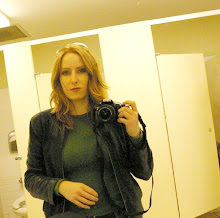We're rare, we're first, or we're fucked.
Just read it. It's compelling. And my money is on rare and fucked. Accidents happen, doesn't mean they turn out well.

We're rare, we're first, or we're fucked.
While my workshop study answered some questions, it raised others. Why does creativity run in families? What is it that gets transmitted? How much is due to nature and how much to nurture? Are writers especially prone to mood disorders because writing is an inherently lonely and introspective activity? What would I find if I studied a group of scientists instead?
These questions percolated in my mind in the weeks, months, and eventually years after the study. As I focused my research on the neurobiology of severe mental illnesses, including schizophrenia and mood disorders, studying the nature of creativity—important as the topic was and is—seemed less pressing than searching for ways to alleviate the suffering of patients stricken with these dreadful and potentially lethal brain disorders. During the 1980s, new neuroimaging techniques gave researchers the ability to study patients’ brains directly, an approach I began using to answer questions about how and why the structure and functional activity of the brain is disrupted in some people with serious mental illnesses.
As I spent more time with neuroimaging technology, I couldn’t help but wonder what we would find if we used it to look inside the heads of highly creative people. Would we see a little genie that doesn’t exist inside other people’s heads?
Located in the Llechwedd caverns in Blaenau Ffestiniog, North Wales, Bounce Below is operated by adventure tourism company Zip World and offers visitors a chance to explore this huge underground hole in an exciting fashion -- with supplied safety helmets and overalls, of course.
Alternatively, it would be nice to see something like this created inside of a gutted old building rather than tearing it down.